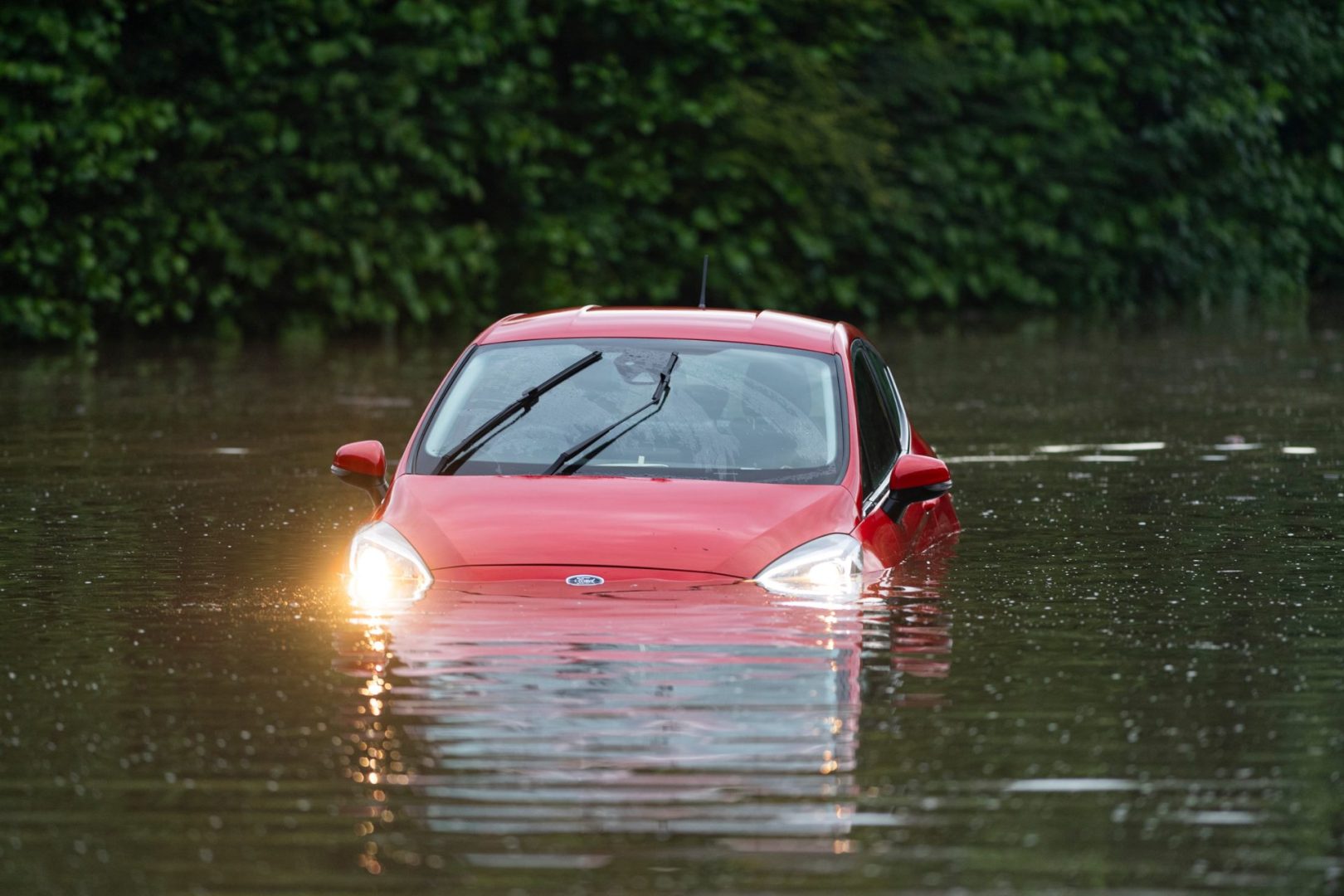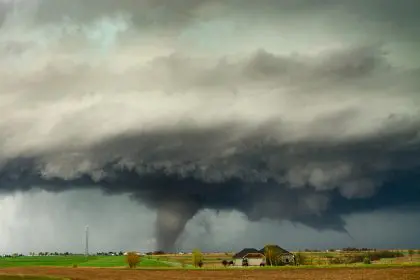Allegheny County residents found themselves under an urgent flash flood warning as dangerous weather conditions swept through the region, creating potentially life-threatening situations for thousands of families across western Pennsylvania. The emergency alert, which remained active until 1:45 p.m. on Tuesday, highlighted the serious flooding risks that can develop rapidly during intense rainfall events.
The National Weather Service issued the warning as heavy rains pounded the area, creating conditions that could produce sudden and violent flooding capable of endangering lives and property. These weather emergencies serve as stark reminders of how quickly ordinary rainfall can transform into deadly hazards.
While the immediate threat has passed for Allegheny County, the situation underscores the critical importance of understanding flood safety and being prepared for future weather emergencies that can strike with little warning throughout the region.
The immediate threat and community response
The flash flood warning for Allegheny County created urgent concerns for residents in flood-prone areas who needed to take immediate protective action. Emergency management officials worked quickly to disseminate safety information and coordinate response efforts across the county.
Local authorities monitored conditions closely while heavy rains continued, ready to implement evacuation procedures if flooding conditions worsened. The collaborative effort between weather services and local emergency management helped ensure residents received timely warnings about developing dangers.
Road closures became necessary in several areas as water accumulated on roadways, creating hazardous driving conditions. Transportation officials worked to redirect traffic around affected areas while monitoring water levels on major routes throughout the county.
The weather service confirmed that heavy rainfall had ended and flooding was no longer expected to pose an immediate threat. However, officials emphasized the importance of continuing to observe road closures and remaining cautious in areas where water may still be present.
Understanding the difference between flood alerts
Flash flood warnings represent the most urgent type of flood alert, issued when dangerous flooding is either happening or about to happen imminently. These warnings require immediate action from anyone in affected areas, as flash floods can develop within minutes and pose severe threats to life and property.
Flood warnings are issued when flooding is expected or already occurring but may develop more gradually than flash flooding situations. These warnings still require prompt action but may provide more time for preparation and evacuation if necessary.
Flood advisories indicate that flooding is possible but not expected to reach levels requiring a full warning. While these alerts suggest less severe conditions, they still warrant attention and preparation as flooding can still cause significant inconvenience and potential danger.
Flood watches are issued when weather conditions favor the development of flooding, though flooding is not guaranteed to occur. These watches provide advance notice that residents should monitor conditions and be prepared to take action if situations deteriorate.
Essential safety measures during flood emergencies
Moving to higher ground represents the most critical action for anyone in flood-prone areas when warnings are issued. Low-lying areas, including basements and ground-floor rooms, become particularly dangerous as water levels rise and electrical hazards increase.
Evacuation orders from local authorities must be followed immediately without hesitation. Before leaving homes, residents should secure their properties by turning off utilities if time permits and locking doors to prevent additional damage from vandalism or debris.
Electrical safety becomes paramount during flooding situations, as water and electricity create deadly combinations. Residents should avoid any areas where electrical outlets, cords, or appliances might be in contact with flood water, as electrocution risks are severe.
Emergency services should be contacted immediately by calling 911 if anyone becomes trapped by flood waters. Attempting self-rescue in moving water often leads to additional casualties, making professional rescue assistance crucial for survival.
The hidden dangers of flood water
Flood water that appears shallow can still pose serious threats to human safety, as just six inches of fast-moving water contains enough force to knock adults off their feet. The deceptive nature of flood water leads many people to underestimate risks and make dangerous decisions.
Walking through any flood water should be avoided entirely, regardless of apparent depth or speed. Hidden debris, unstable surfaces, and strong currents beneath the surface create multiple hazards that can quickly overwhelm even strong swimmers.
Contamination in flood water presents additional health risks, as runoff carries sewage, chemicals, and other hazardous materials that can cause serious illness. Even brief contact with contaminated flood water can lead to infections and other health complications.
The temperature of flood water can also pose risks, particularly during cooler weather when hypothermia becomes a concern for anyone who becomes immersed. The combination of cold water and physical exhaustion can quickly become life-threatening.
Vehicle safety during flooding conditions
Driving through flood water represents one of the most dangerous decisions people make during flooding emergencies. Just 12 inches of moving water can carry away most passenger vehicles, while deeper water can float large trucks and buses.
The force of moving water against vehicles is far greater than most people realize, and once a car begins to float, occupants lose all control over their direction and safety. Rescue becomes extremely difficult and dangerous for both victims and emergency responders.
Road surfaces beneath flood water may be severely damaged or completely washed away, creating hidden drop-offs that can trap vehicles instantly. The inability to see road conditions makes any attempt to drive through flood water essentially blind navigation.
Alternative routes and patience save lives during flooding events, as taking longer paths around affected areas is always preferable to risking lives by attempting to drive through water. Emergency services prioritize resources for actual emergencies rather than preventable situations.
Safe driving practices during heavy rainfall
Maintaining proper following distances becomes even more critical during heavy rain, as stopping distances increase significantly on wet pavement. The standard two-second rule should be extended to four seconds minimum during heavy rainfall conditions.
Speed reduction helps maintain vehicle control on wet roads while providing more time to react to changing conditions. Gradual acceleration and braking prevent loss of traction that can lead to dangerous skidding or spinning.
Lane selection on multi-lane roads can impact safety, as water tends to accumulate in outside lanes where drainage may be less effective. Middle lanes often provide better traction and visibility during heavy rainfall events.
Headlight activation improves visibility for both the driver and other motorists during heavy rain. The increased visibility helps prevent accidents while making vehicles more noticeable to other drivers struggling with reduced visibility.
Recognizing when to stop driving
Windshield wiper effectiveness provides a good indicator of whether driving conditions remain safe. When wipers cannot keep windshields clear enough for adequate visibility, stopping becomes necessary for safety.
Rest areas and other sheltered locations provide safe places to wait out severe weather conditions. These designated areas offer protection while keeping vehicles off active roadways where they might pose hazards to other drivers.
Roadside stopping should be a last resort, but when necessary, vehicles should be positioned as far from traffic as possible. Emergency flashers and headlights help alert other drivers to the presence of stopped vehicles during poor visibility conditions.
Emergency contact information should be readily available for anyone who becomes stranded during severe weather. Having charged mobile devices and emergency supplies can make significant differences in safety and comfort during unexpected delays.
Preparing for future flood emergencies
Emergency supply kits should include water, non-perishable food, flashlights, batteries, first aid supplies, and important documents stored in waterproof containers. These supplies provide essential resources during emergencies when normal services may be disrupted.
Communication plans help family members stay connected during emergencies when normal communication methods may be compromised. Establishing meeting places and contact procedures ensures families can reunite safely after emergency situations.
Property protection measures can minimize flood damage when warnings provide advance notice. Moving valuable items to higher floors, sandbagging, and securing outdoor furniture help reduce property losses during flooding events.
Insurance coverage should be reviewed regularly to ensure adequate protection against flood damage. Standard homeowner policies typically exclude flood damage, making separate flood insurance necessary for comprehensive protection.
Community resources and support systems
Local emergency management agencies provide valuable resources for flood preparedness and response planning. These organizations offer training, information, and assistance that can help residents prepare for and respond to flood emergencies effectively.
Weather monitoring services provide real-time updates about developing conditions that may lead to flooding. Staying informed through official weather sources helps residents make timely decisions about safety measures and evacuation if necessary.
Neighborhood support networks can provide assistance during emergencies, particularly for elderly or disabled residents who may need additional help evacuating or preparing for flood conditions. Community cooperation enhances everyone’s safety during emergency situations.
Educational opportunities through community organizations help residents understand flood risks and learn proper response procedures. Regular training and information sessions improve community-wide preparedness and response capabilities.
Long-term flood risk awareness
Climate patterns and development changes can affect local flood risks over time, making regular reassessment of personal and community flood preparedness important for long-term safety. Understanding evolving risks helps guide appropriate preparation efforts.
Infrastructure improvements and maintenance affect drainage capabilities and flood control systems. Supporting community investments in flood prevention and mitigation helps reduce risks for entire neighborhoods and regions.
Personal responsibility for flood preparedness extends beyond individual safety to include community-wide efforts that benefit everyone. Individual preparation contributes to overall community resilience during emergency situations.
Regular practice of emergency procedures helps ensure that safety measures become automatic responses during actual emergencies. Familiarity with evacuation routes and safety procedures can save precious time when every second counts during flood emergencies.


















